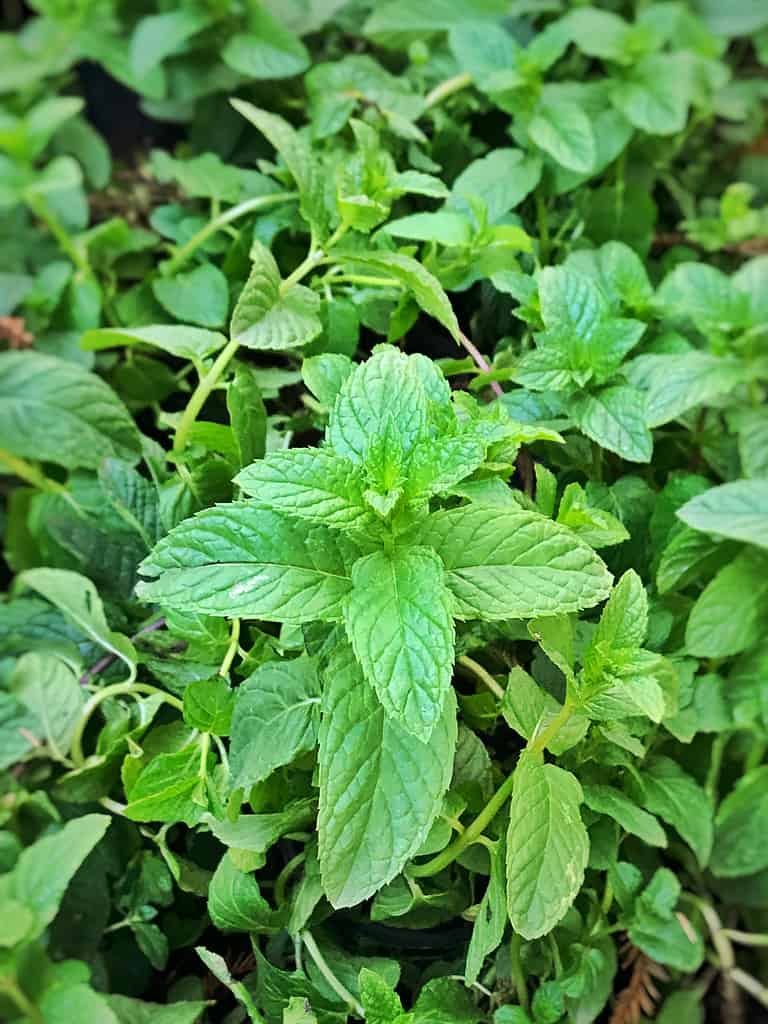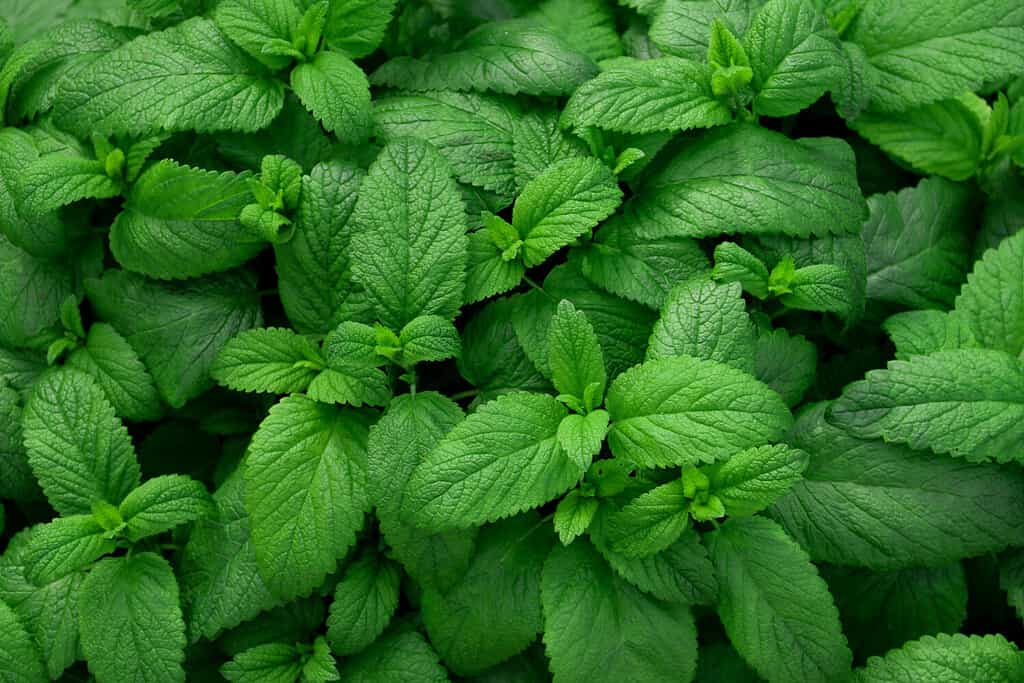Mint goes back to ancient times and has long been a pleasant yet invigorating scent for humans. But that’s not the case for most bugs and rodents. Is peppermint oil insect repellent effective? It is a great start.
Peppermint oil, a direct plant extract, is a foul and threatening scent to tinier creatures who rely on scent for survival much more than humans do. Here are some tips on the proper use of this inexpensive, natural pest control method.
Best Ways to Maximize Peppermint Oil Insect Repellent
- Find where the bugs or critters are coming from and place peppermint oil-saturated items there
- Placing oiled cotton outside is ideal: stop the problem before it starts
- Be sure to get the best possible 100% peppermint oil product
- Refresh often as the potency wears off quickly; especially if it’s outside in the weather
Does Peppermint Oil Repel Bugs Like Mosquitoes the Same as Other Things?

Mosquitos particularly dislike the smell of peppermint oil.
©Kwangmoozaa/Shutterstock.com
Peppermint oil is a practical, economical way to help prevent bug and rodent problems in the home, garage and elsewhere. While spring-loaded or other traps and baited poisons can eliminate bugs and critters, they do contain certain chemicals that peppermint oil does not.
Strategic use of peppermint oil insect repellent is mainly as a deterrent and not a pesticide. The bugs and crawlies won’t die, but they’ll sure know to stay away. And that’s one added benefit: even a small mouse carcass in the drywall or some other nook can become a noxious, hard-to-eliminate odor. If the critter knows to stay away because of the pungent peppermint smell, that dead mouse won’t be a problem.
Get the Best Product with the Highest Concentration
The key here is to get all-natural, concentrated peppermint oil. It might sound like a chore for something that is supposed to be a quick fix, but checking the company, product reviews, etc, is critical. The essential oils market has seen a boom in recent years (and even received some ribbing), leading to a flood of cheap knock-offs.
Home and lifestyle writer Cora Gold of The Revivalist says to be sure not to get “fragrances.” The product needs to be labeled as oil. And even then, check the contents if possible. Sometimes, a cheap product will have other oils added as filler, and certain types of filler oils can actually attract bugs and rodents. Not ideal.
Mosquitoes and Rats Particularly Dislike Peppermint Oil Insect Repellent

Not only can Egyptian mint (pictured) grow 3 feet tall, but the hardy herb can also grow large green leaves and pale purple blossoms in the summer.
©KhaledYousry22/Shutterstock.com
Rats are repulsed by peppermint oil and mosquitoes particularly dislike mint. A study published in the journal Parasites and Vectors showed certain peppermint oil compounds had some effectiveness in repulsing mosquitos. In an older study, high doses of the components in peppermint oil also made lab rats sick, according to a published article by the Federation of European Toxicologists & European Societies of Toxicology.
But the main thing here is the smell. For rats and other rodents specifically, their droppings—somehow—act as pheromones for mates. The natural alcohol, menthol, and other substances in peppermint oil that make it a sharp scent will keep many types of crawly pests out of the home, particularly rats and mosquitoes.
Frequent Refreshes Are Key for Peppermint Oil Insect Repellent
The short-term effectiveness study highlights the importance of adequately using peppermint oil insect repellent. First, it has to be refreshed frequently. A new dose every week might be necessary.
Use Cotton Pads Instead of Cotton Balls and Do Some Detective Work for Placement

These are vibrant mint plants.
©Olesya Myzzz/Shutterstock.com
Most guides will recommend placing the peppermint oil on a cotton ball. This can work, but it could be a challenge. A soft, fluffy sphere is difficult to hold and shake oil onto from an uncooperative, teeny bottle. A better choice is cotton pads. Cotton pads are flatter cotton balls and have a tougher weave.
Place five drops of oil onto a cotton pad. Place them in a circle instead of one spot in the middle, if possible. These cotton pads will be easier to place in needed areas. They’re also less likely to roll over like cotton balls which can then leave a fragrant but oily stain.
Look for the gaps in baseboards, door trim, and around windows (inside and outside). The garage is an important entry point as well. Check under the kitchen, bathroom, laundry room sinks, etc. The minuscule gap around where pipes come through the wall is often a secret highway for bugs.
Peppermint Oil Works Well with Full-Scale Prevention
For any serious infestation, peppermint oil will not be enough by itself. But for nuisance pests and smaller challenges with critters—mosquitos in particular—it’s a great option. Placing a scutcheon ring around that piping gap and caulking any window or door gaps are also excellent prevention measures.
The photo featured at the top of this post is © Tatevosian Yana/Shutterstock.com
Thank you for reading! Have some feedback for us? Contact the AZ Animals editorial team.







